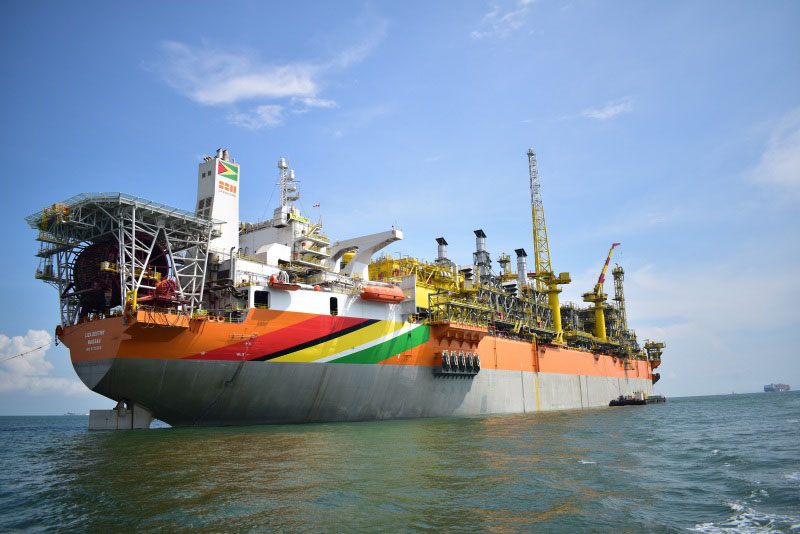With repairs to components of the Liza Destiny oil platform flash gas compressor now completed, ExxonMobil’s affiliate Esso Exploration and Production Guyana Limited (EEPGL) on Friday said that reinstallation and start-up of the compressor should be done by mid-June.
“The new, upgraded and or repaired components of the flash gas compression system on the Liza Destiny FPSO (Floating, Production, Storage and Offloading) have arrived offshore Guyana and are being reinstalled. These include a newly-designed third stage discharge venturi and upgraded discharge silencer,” EEPGL’s local Public and Government Affairs Advisor Janelle Persaud said yesterday.
Persaud added that the team remains on track to complete reinstallation and start-up of the flash gas compressor later this month before adding that the company is hoping that this can be done by mid-June.
“In the meantime, we continue to safely manage flare levels to less than 15Mscfd,” she ended.
Since January this year, ExxonMobil has experienced major problems with the gas compression equipment on its Liza Destiny FPSO platform offshore Guyana and this has led to environmentally-damaging gas flaring.
President of ExxonMobil Guyana Alistair Routledge had said that the gas compressor failed in the middle of the night on January 27 this year, when optimisation testing was ongoing and the production level was around 130,000 bpd. However, he maintained that this was not in any way linked to the malfunction.
Following the malfunction, the gas compressor and other key parts from the FPSO were sent to Germany for repairs. A few weeks later, it was announced that logistics for its departure from Germany were being finalised following the successful completion of repairs, upgrades and mechanical testing of the compressor by MAN Energy Solutions, the equipment’s manufacturer, with quality assurance and control by experts from the vessel’s owner SBM Offshore as well as Exxon.
On April 13, ExxonMobil announced that its third phase of testing of repaired gas compression equipment on the Liza Destiny had failed and that this had resulted in production being slashed to 30,000 barrels. However, several days later the Company said that it has begun ramping up output and that a solution was at least three months away during which controversial flaring would occur. The gas compressor was sent to Houston, Texas in the United States for repairs.
With the compressor having had to be repaired twice during the early part of this year, the Environmental Protection Agency (EPA) modified the Environmental Permit for the Liza Phase 1 Development Project mandating EEPGL to pay for gas flaring once it continues beyond a 14-day period. Exxon has since brought forward its repairs and reinstallation date.






